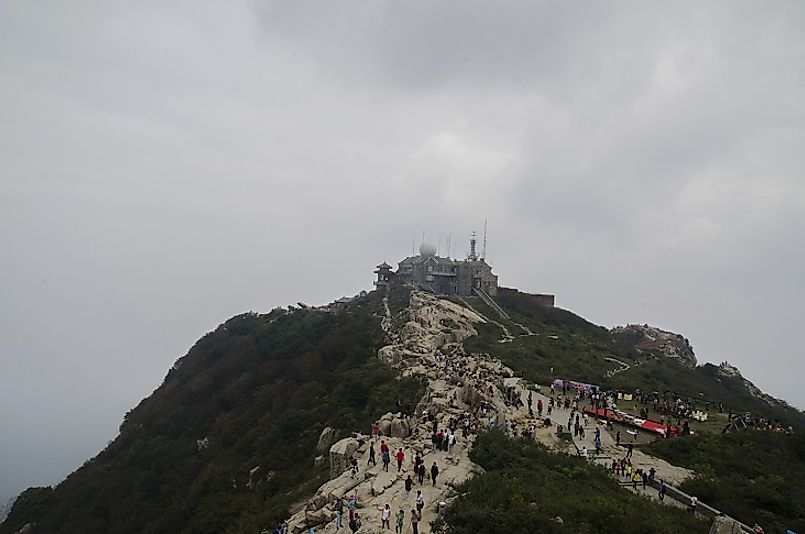Where Does Mount Tai (Tai Shan) Rise?

5. Description
Mount Tai, or Tai Shan, is a UNESCO World Heritage Site and a mountain of historical and cultural significance. Tai Shan is found located north of the city of Tai'an in the western Shandong province of China. The mountain is regarded as one of the "Five Great Mountains of China", and has served as a place of worship for at least 3,000 years. The Jade Emperor is the tallest peak in the Mount Tai, and is around 5,029 feet tall. The mountain covers an area of 426 square kilometers at its base, and rises from 492 feet in elevation at the base to 5,069 feet above sea level at the highest peak.
4. Historical Role
Archaeological evidence suggests that the Mount Tai region was inhabited as far back as the Paleolithic period, and into the Neolithic period two distinct cultures, the Dawenkou culture and the Longshan culture, developed in the region. Practices of religious worship on Mount Tai began to pop up 3,000 years ago during the rule of the Shang Dynasty of China. The mountain came to be regarded as the abode of supernatural powers with a powerful resident deity, the Great Emperor of the Eastern Peak, who is subordinate only to the Jade Emperor, the Ruler of Heaven, in Chinese mythology. Over the decades, the mountain has gained importance in Chinese religions, and was believed to host a multitude of spirits who controlled the fates of the people living in the region. Several murals and statues have been constructed on the mountain exhibiting the afterlife horrors of those who have failed to live morally. The mountain has also acted as the site of several of the Chinese imperial family’s ritual practices, including ritualistic sacrifices like the Feng and Shan sacrifices. These sacrificial rituals were so highly significant that some of these occasions were even attended by representatives of royals of many other regions of the world, including those of India, Japan, the Umayyad Caliphate, the Khmer, and the Turks. As per the historical records available, around 72 Chinese emperors, and countless numbers of Ancient Chinese poets, artists, and writers, have visited Mount Tai to perform rituals, or otherwise to simply receive inspiration from the holy mountain.
3. Modern Significance
Mount Tai Shan continues to serve as a region of religious significance in Chinese culture. Recognizing its cultural importance, the UNESCO declared it as a World Heritage Site in 1987. Besides religious visits by Chinese, millions of tourists also visit the Mount Tai every year from abroad, and in 2003 there were 6 million visitors to the mountain. The mountain also hosts several architectural buildings built by Chinese worshipers and royals, including 22 temples, 819 stone tablets, 1,018 inscriptions on cliff-side walls and stones, and other features of religious significance. 7,200 steps lead up to the peak of Mount Tai, which are lined by several kiosks, archways, gates, and pavilions.
2. Habitat and Biodiversity
A warm temperate climate prevails in the Mount Tai region. 79.9% of the landscape is covered by vegetation which is highly diverse in nature, comprising of around 989 species of woody and herbaceous plants. The mountain also hosts several ages-old trees planted by ancient Chinese emperors. These include, for example, the 2,100-year-old Han Dynasty Cypresses and the 500-year-old Welcoming Guest Pines planted by the royals of the Qin Dynasty. Plants of medicinal importance also grow in this and neighboring mountains. 200 species of animals, including 122 bird species, are also found in the mountain's habitats.
1. Environmental Threats and Territorial Disputes
Over the years, the importance of Mount Tai Shan has multiplied, drawing large numbers of tourists to the place. As is usual with all places of tourist importance, Mount Tai Shan has witnessed several planned and unplanned constructions of barbecue sheds, villas, and hotels. This has often forced the Chinese government to pull down all of the illegally made structures there. Garbage left by tourists and unplanned construction site pile-ups also mar the beauty of the mountain, necessitating regular clean-up operations by the government workers managing the mountain's area and off-lying facilities.







